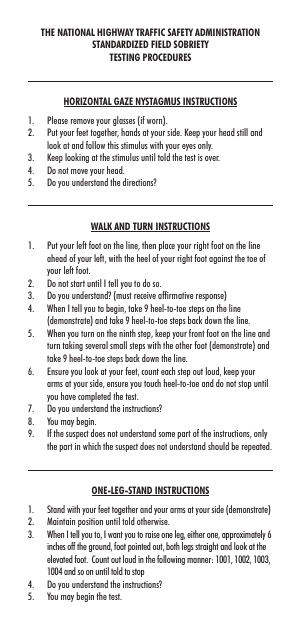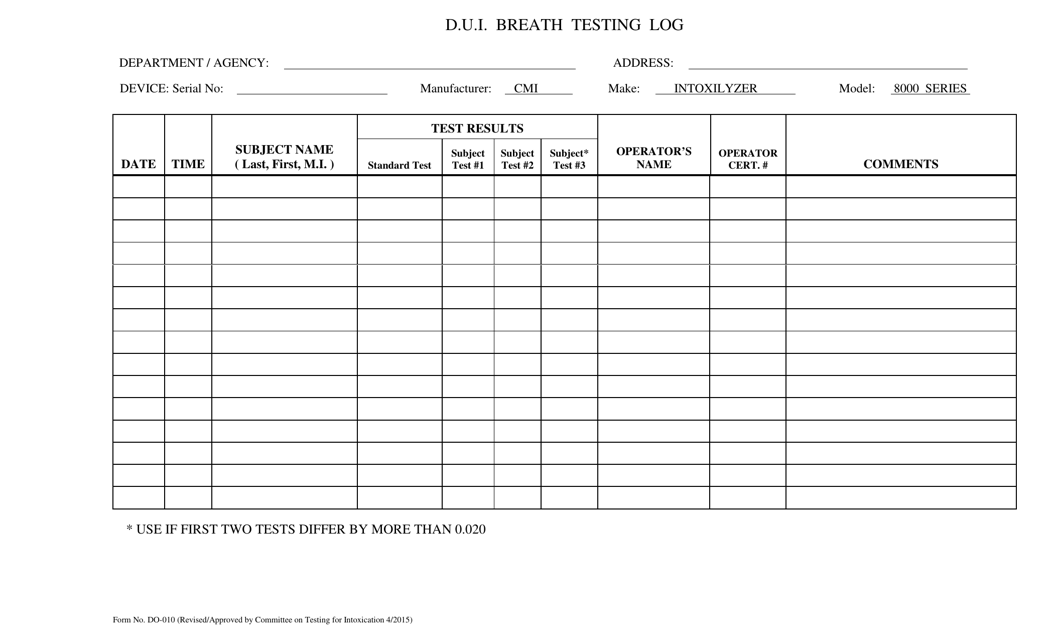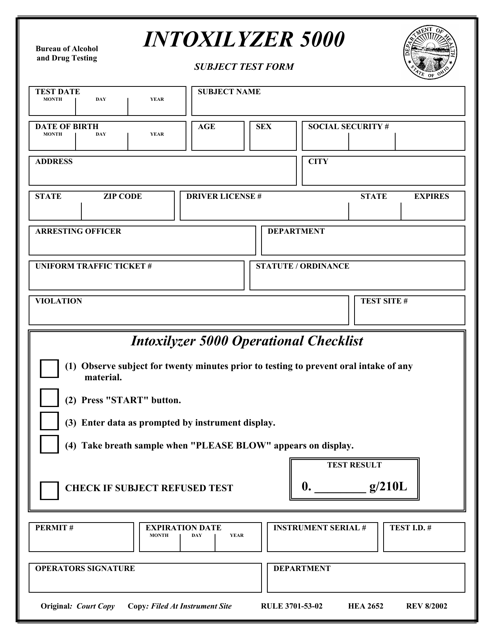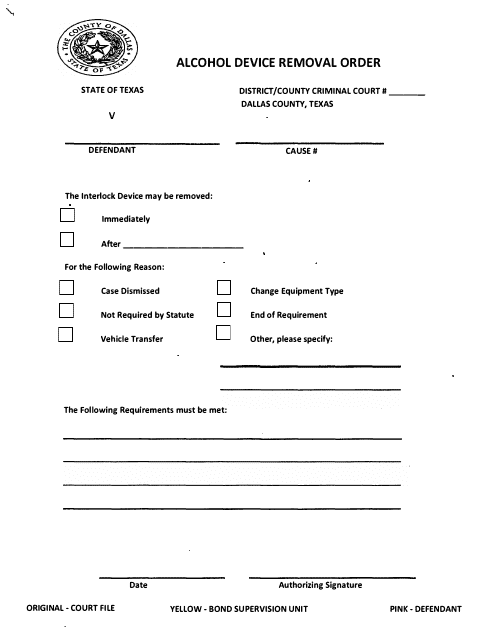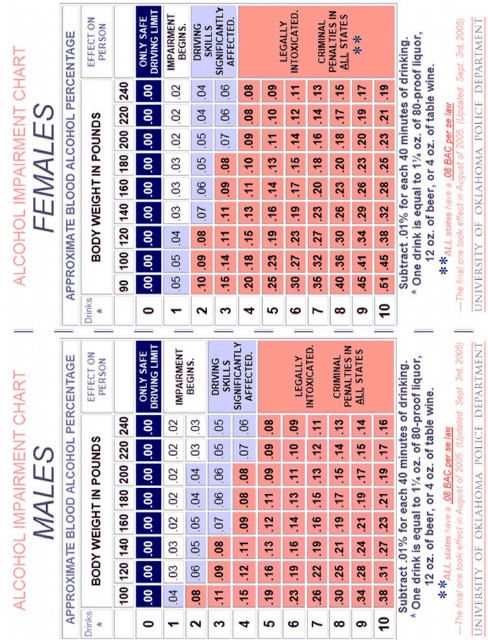Sobriety Test Templates
Sobriety Test: Ensuring Safety on the Roads
Driving under the influence of alcohol or drugs poses a significant risk to public safety. To combat impaired driving, various methods have been developed to assess an individual's sobriety. Sobriety tests, also known as sobriety testing or sobriety tests, are a series of assessments conducted to determine if a driver is impaired.
These tests aim to measure a person's level of physical and cognitive impairment, providing law enforcement officers with objective evidence of intoxication. By administering these assessments, authorities can make informed decisions regarding a driver's ability to operate a vehicle safely.
The sobriety test procedures may vary depending on the jurisdiction, but they typically include a combination of physical and cognitive tasks. One example is the "Twenty-Four Seven Sobriety Program," offered in North Dakota. This program requires drivers with a previous DUI conviction to submit to daily breath tests to ensure compliance with sobriety regulations.
Another common component of sobriety testing is the use of an intoxilyzer instrument, such as the Intoxilyzer 5000. This device measures a person's breath alcohol concentration, providing an accurate indication of their level of intoxication. In Ohio, for instance, there are specific forms, such as the Intoxilyzer 5000 Instrument Check Form and the Intoxilyzer 5000 Subject Test Form, used to document the results of these tests.
Sobriety tests play a crucial role in identifying impaired drivers and deterring future instances of drunk or drugged driving. By implementing these assessments, authorities can take appropriate actions to protect the public from the dangers associated with impaired driving.
If you have questions about sobriety tests or need more information about complying with sobriety regulations, consult your local law enforcement agency or legal resources for guidance.
Remember, choosing not to drink and drive is the best way to prevent putting yourself and others at risk. Stay sober, stay safe.
Documents:
11
This document provides standardized procedures for law enforcement officers in the state of New Jersey to administer field sobriety tests during traffic stops. These tests are used to determine if a driver is impaired by alcohol or drugs.
This form is used for maintaining a log of breath testing conducted during DUI (Driving Under the Influence) incidents in Nevada.
This document provides information about a breath analysis instrument in New York. It explains how the instrument works and its purpose in analyzing breath samples.
This form is used to conduct an instrument check for the Intoxilyzer 5000 in Ohio. It is used to ensure the accuracy and proper functioning of the breathalyzer device.
This form is used for conducting subject tests using the Intoxilyzer 5000 breathalyzer device in the state of Ohio.
This document is for the removal of an alcohol monitoring device in Dallas County, Texas. It is used when someone is no longer required to wear the device.
This document provides a chart that illustrates the effects of alcohol impairment on a person's motor skills, judgment, and coordination. It serves as a visual guide for understanding the level of impairment based on blood alcohol concentration (BAC) levels.
This chart illustrates the stages of intoxication. It provides information on the different levels of impairment based on blood alcohol content (BAC) levels.
This document serves as a useful tool to understand the potential impact of various drinks on your bodily alcohol content, taking into account numerous factors such as weight, drink type and time.

